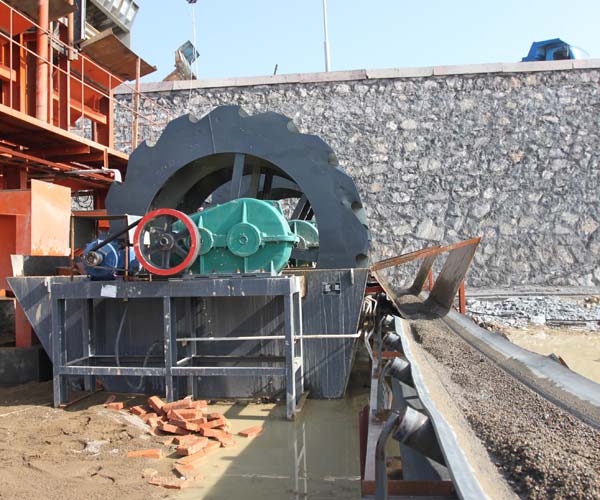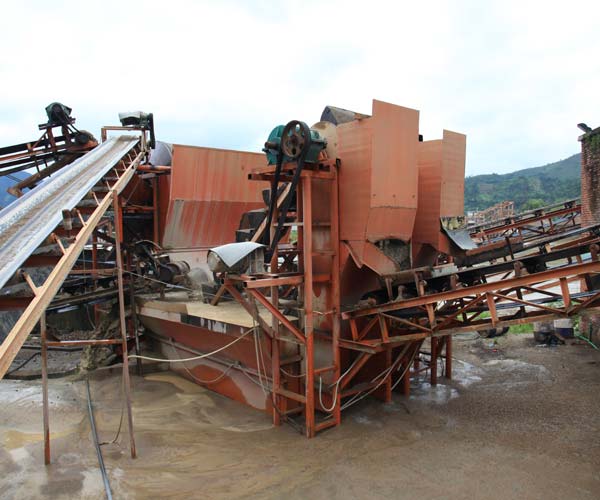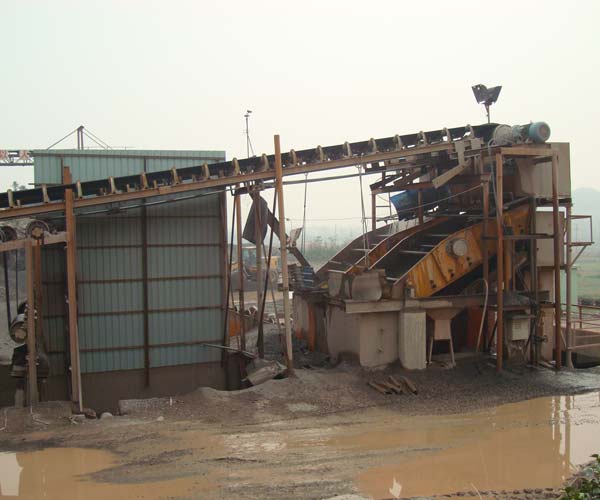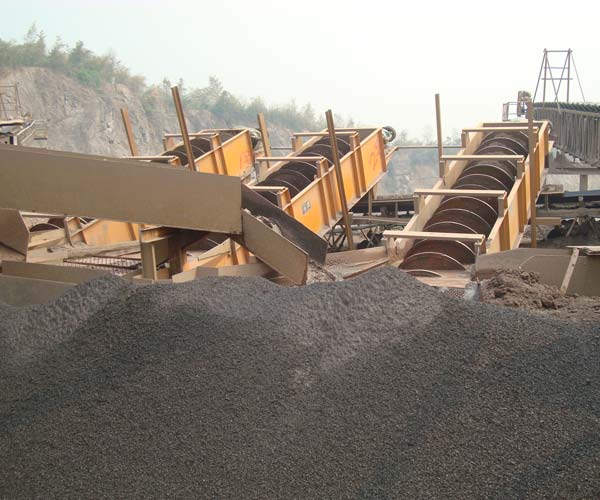
Silica sand washers revolutioniz the process of material cleaning and processing. Efficient silica sand washers represent a fusion of thoughtful design, precision engineering, and cutting-edge technology. The key features discussed, from high-capacity drums to advanced filtration systems, contribute to the overall efficiency of these crucial material processing units.
24 Online Service

Silica sand washers operate on a simple yet effective principle – they use water to remove impurities from the raw silica sand. The process typically involves a combination of mechanical agitation, water, and sometimes chemicals to break down and separate impurities from the sand particles. The basic components of a silica sand washer include a tank, a pump, a classifier, and a rotating screw or wheel that agitates and cleans the sand.
The raw silica sand is fed into the washer, where it undergoes a series of steps to eliminate impurities. The agitating mechanism stirs the sand, and water is introduced to create a slurry. Impurities, such as clay, silt, and organic matter, are dislodged and carried away by the water. The clean sand is then separated and discharged, ready for further processing or direct use.
Several types of silica sand washers are available in the market, each catering to specific industry needs and production capacities.
These washers use a helical, screw-like blade to move and agitate the sand, facilitating the removal of impurities.
Spiral sand washers are suitable for both small and large-scale operations, offering versatility in handling different types of silica sand.
Operating on a rotating wheel mechanism, these washers lift and agitate the sand, allowing impurities to be washed away.
Wheel sand washers are known for their efficiency and are commonly used in applications where a high degree of cleanliness is essential.
These washers employ a large bucket wheel to scoop up and agitate the sand, providing effective cleaning.
Bucket wheel sand washers are often used in large-scale operations, such as sand processing plants, due to their high capacity.
Utilizing mechanical force and water, attrition scrubbers break down impurities through collisions between particles.
These washers are particularly effective in removing surface contaminants and coatings on silica sand.

Silica sand, a crucial raw material in industries like glass manufacturing, construction, and electronics, presents a unique opportunity for optimization in material processing. By addressing challenges associated with traditional silica sand processing, industries can enhance both efficiency and sustainability.
Implementing advanced separation technologies, such as magnetic separation and flotation, allows for more precise separation of impurities from silica sand. This not only improves the quality of the final product but also reduces the volume of waste generated during processing.
Utilizing energy-efficient processing methods, such as microwave or ultrasonic processing, minimizes energy consumption while enhancing the speed and effectiveness of silica sand processing. This approach contributes to cost savings and a reduced carbon footprint.
Efforts should be directed towards developing processes that enable the recycling and reuse of water used in silica sand processing. This not only conserves a valuable resource but also reduces the environmental impact associated with water consumption and discharge.
Integrating digitalization and automation into silica sand processing enhances control over various parameters, ensuring consistent quality and reducing the risk of human error. Real-time monitoring and data analysis contribute to proactive decision-making and process optimization.

Efficiency begins with thoughtful design and precision engineering. Modern silica sand washers are built with a focus on durability, ease of maintenance, and, most importantly, optimal sand washing capabilities. The design includes features such as:
Silica sand washers are equipped with high-capacity drums that allow for substantial material throughput. The larger the drum capacity, the more efficient the washer is in processing larger quantities of silica sand in a shorter time.
Variable speed drives provide flexibility in adjusting the drum speed according to the specific requirements of the material being processed. This not only enhances efficiency but also helps in preventing unnecessary wear and tear.
Water conservation is a crucial aspect of efficiency. Silica sand washers are designed with water optimization features, ensuring that the right amount of water is used to achieve thorough cleaning without wastage.
The components of silica sand washers are constructed using wear-resistant materials, ensuring a longer lifespan and minimizing downtime for maintenance. This robust construction contributes significantly to the overall efficiency of the system.
The integration of advanced technology has propelled silica sand washers into a new era of efficiency. Some of the key technological aspects include:
Modern silica sand washers often feature sophisticated automation and control systems. These systems enable precise monitoring and control of various parameters, leading to optimized performance and reduced manual intervention.
Sensors play a vital role in ensuring that the washer operates at peak efficiency. Proximity sensors, moisture sensors, and temperature sensors are strategically placed to provide real-time data, allowing for immediate adjustments and optimization.
Silica sand washers equipped with data analytics capabilities enable operators to analyze performance data and identify areas for improvement. This data-driven approach contributes to continuous optimization and enhanced efficiency over time.
Our Projects
Copyright © ZENITH, All Right Reserved.
